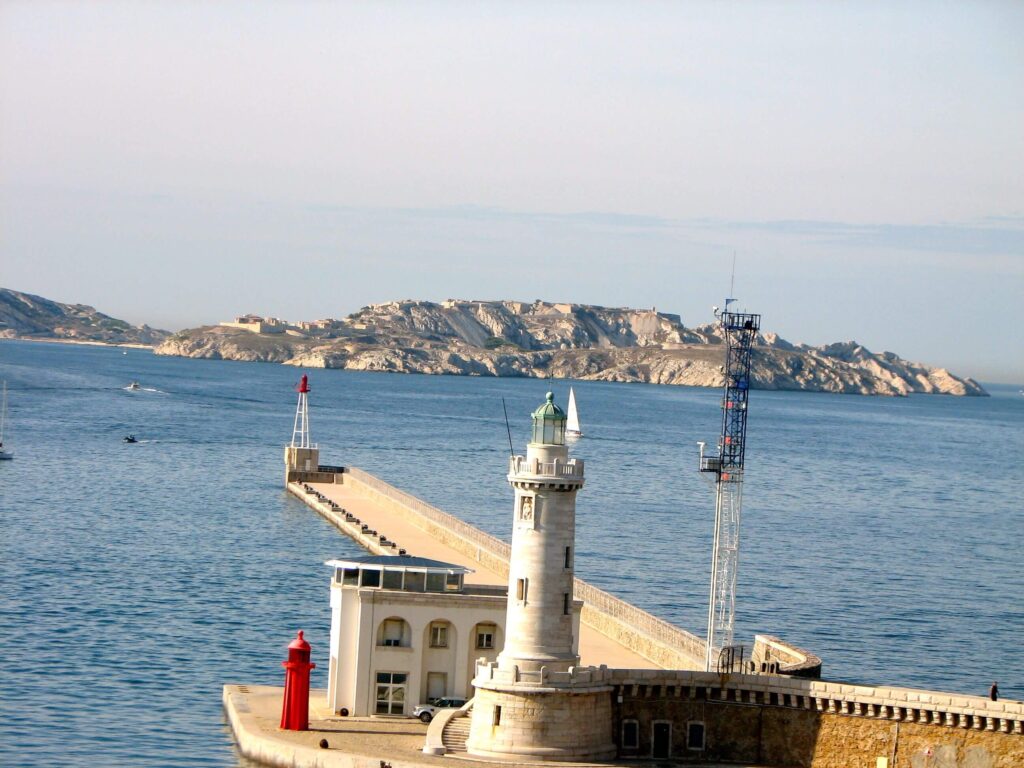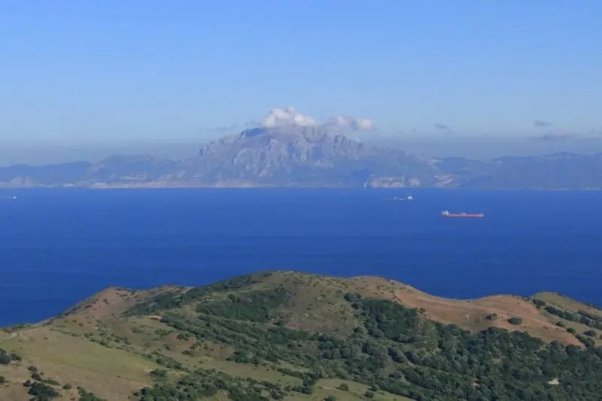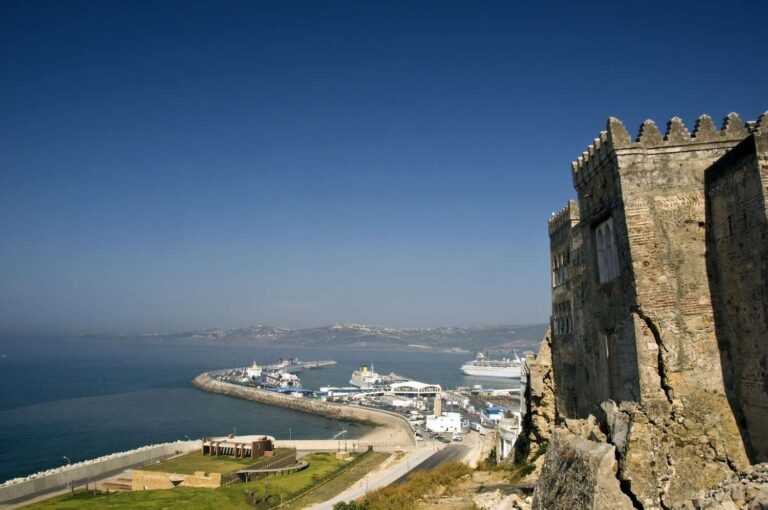Yes, under specific conditions and from certain elevated viewpoints along the southern coast of Spain, it is possible to see Morocco across the Strait of Gibraltar.
However, this visibility is not guaranteed and depends on factors like weather, atmospheric clarity, and the time of day.
The Strait of Gibraltar is a stunning narrow waterway that separates Europe and Africa.
It’s famous for its beauty and its vital role in connecting the Mediterranean Sea to the Atlantic Ocean.
In this unique geographical location, we find Morocco to the South and Spain to the north, separated by this narrow strip of water. In this blog post, we’ll break down the answer to the question: can you see Morocco from Spain.
The Visibility Factor of Morocco From Spain

Factors affecting visibility across the Strait
Several factors come into play when considering visibility across the Strait of Gibraltar:
Atmospheric Conditions: The clarity of the air, influenced by factors such as humidity and pollution, can significantly affect visibility.
Elevation: Viewing from higher points, such as cliffs or tall buildings, can improve visibility by providing a better vantage point.
Weather Conditions: Weather elements like fog, mist, and haze can obscure the view.
Distance: The curvature of the Earth means that objects become less visible as they get farther away.
Weather conditions and their impact on visibility
Weather conditions in Spain play a crucial role in determining whether you can see Morocco from Spain:
Clear Skies: On clear, sunny days with low humidity and minimal pollution, visibility across the strait is at its best.
Fog and Mist: Foggy or misty conditions can significantly reduce visibility, making it challenging to see across the strait, even from elevated vantage points.
Haze: Hazy conditions, often caused by air pollution or desert dust, can affect visibility, but it may still be possible to see Morocco on some days.
Time of day and its relevance to seeing Morocco from Spain
The time of day can also influence visibility:
Daytime: Generally, daytime provides better visibility due to natural daylight. Midday, when the sun is high in the sky, often offers the clearest views.
Nighttime: Seeing Morocco from Spain at night is highly unlikely due to the absence of natural light.
Historical Accounts to See Morocco from Spain
Mention of historical records of people claiming to see Morocco from Spain
Throughout history, numerous accounts of people claim to see Morocco from Spain across the Strait of Gibraltar.
These accounts often sparked curiosity and wonder, with individuals sharing their observations of distant land masses on clear days.
Famous instances of visual contact across the Strait
The Pillars of Hercules: The ancient Greeks referred to the Strait of Gibraltar as the “Pillars of Hercules” and believed it marked the end of the known world.
Greek mythology included stories of Hercules, who was said to have stood on one pillar (Gibraltar) and looked across to the other (Mount Acha near Ceuta, Morocco).
While this is more legend than fact, it demonstrates the longstanding fascination with the strait’s geography.
The Battle of Trafalgar (1805):
In this famous naval battle between the British Royal Navy and the fleets of France and Spain, some sailors and officers said they could see the coast of Africa (Morocco) from their ships near southern Spain.
How do historical accounts differ from the present-day?
Historical accounts of seeing Morocco from Spain should be considered in the context of their time.
Factors such as the clarity of the atmosphere, the absence of air pollution, and the limited knowledge of geography may have contributed to these accounts.
In contrast, modern observations consider factors like pollution, urban development, and changes in visibility due to environmental conditions.
Modern-Day Perspectives
The Contemporary observations
In modern times, there continue to be accounts of people claiming to see Morocco from certain points in southern Spain, particularly from elevated locations along the coast.
While such sightings are not an everyday occurrence, they happen under specific visibility and weather conditions.
The visual experience of seeing Morocco from Spain
The ability to see Morocco from Spain in the present day can be attributed to several factors:
Short Distance: The Strait of Gibraltar is relatively narrow at its narrowest point, approximately 14 kilometers (around 9 miles). This short distance makes it possible to see across under favorable conditions.
Elevation: Viewing from higher elevations, such as hills or cliffs along the Spanish coast, can provide a clearer line of sight across the strait.
Atmospheric Clarity: On days with excellent atmospheric clarity, minimal humidity, and low pollution levels, the visibility across the strait can improve significantly.
Mirage Effect: Atmospheric refraction can create a mirage effect, bending light and making objects appear higher or closer than they actually are. This phenomenon can enhance the visibility of distant landmasses.
Personal anecdotes and experiences shared by locals and tourists
Visitors to the southern coast of Spain, especially in areas like Tarifa and Gibraltar, often share personal anecdotes of seeing the Moroccan coast from elevated viewpoints or on apparent days.
It can be thrilling and awe-inspiring to see two continents from one viewpoint.
Locals and tourists alike are known to gather at specific viewpoints, such as the Mirador del Estrecho en Tarifa, to catch a glimpse of Morocco on particularly clear days.
These moments of visual connection across the Strait of Gibraltar continue to be a source of wonder and curiosity for those who witness them.
Optical Illusions and Mirages
Introduction to atmospheric phenomena like mirages
Mirages are optical illusions caused by the bending of light as it passes through different layers of the Earth’s atmosphere.
These phenomena can create distorted or displaced images of distant objects, often making them appear higher, lower, or closer than they actually are.
How can mirages create the illusion of seeing distant land?
Mirages occur due to variations in the temperature and density of the air layers near the Earth’s surface.
When light passes from one layer of air to another with a different temperature and density, it changes speed and direction, leading to refraction. This bending of light can create the illusion of seeing objects that are not in their actual positions.
In the Strait of Gibraltar context, mirages can make the Moroccan coast appear higher or closer than it truly is. The bending of light can bring distant land into view, even when the Earth’s curvature should hide it from sight.
Role of temperature inversions in mirage formation
Temperature inversions play a crucial role in mirage formation. Normally, air temperature decreases with height above the Earth’s surface. In a temperature inversion, warm air gets stuck under cool air close to the ground.
In the context of mirages, this temperature inversion can cause light rays to bend upward as they pass through the warm layer and then downward as they enter the cooler layer.
This bending creates the mirage effect, making distant objects appear displaced or elevated.
Temperature inversions are often associated with calm, stable atmospheric conditions, which are conducive to the formation of mirages.
In regions like the Strait of Gibraltar, where temperature inversions can occur, mirages are more likely to create the illusion of seeing distant land, such as the Moroccan coast, from the Spanish shoreline.
Iconic Viewing Points

Popular locations for attempting to see Morocco from Spain
Mirador del Estrecho (Tarifa): This viewpoint in Tarifa, Spain, offers stunning views of the Strait of Gibraltar and is a popular spot for attempting to see Morocco. It provides a clear line of sight across the strait, making it a favorite among locals and tourists.
Gibraltar Rock: The Rock of Gibraltar, a British Overseas Territory, provides elevated vantage points from which you can attempt to see Morocco. The cable car ride to the summit is a popular way to access these viewpoints.
Punta Camarinal (Zahara de los Atunes): Located near Zahara de los Atunes on the southern Spanish coast, Punta Camarinal offers another vantage point for gazing across the strait. Its elevated position can enhance visibility.
Recommendations for the best times and places to try
Time of Day: The best times to attempt to see Morocco from Spain are during daylight hours, especially in the late morning or early afternoon when the sun is high in the sky. Clear, sunny days with minimal humidity and pollution are ideal.
Weather Conditions: Keep an eye on the weather forecast. Clear skies with good atmospheric visibility increase your chances of success. Avoid attempting to see Morocco on foggy, misty, or hazy days when visibility is reduced.
Elevated Locations: Choose elevated viewing points like those mentioned above, as they provide a better line of sight across the strait.
Tips for maximizing the chances of success
Patience is Key: Seeing Morocco from Spain is not guaranteed and can be rare. Be patient and prepared to visit the iconic viewing points multiple times to increase your chances.
Bring Binoculars: Binoculars can enhance your view and help you distinguish details on the Moroccan coast.
Check Local Resources: Local tourist centers or guides may have information on the best times and conditions for attempting to see Morocco from specific viewing points.
FAQs
How far is it from Spain to Morocco?
The distance between Spain and Morocco varies depending on the specific locations, but the Strait of Gibraltar, the narrowest point, is approximately 7.7 miles (12.4 kilometers) wide.
What is the closest point in Spain to Morocco?
The closest point in Spain to Morocco is Tarifa, a town located at the southern tip of the Iberian Peninsula.
Is it possible to take a ferry from Spain to Morocco?
Yes, ferry services operate between various Spanish ports (such as Algeciras and Tarifa) and Moroccan ports (such as Tangier and Ceuta).
How long does it take to travel from Spain to Morocco by ferry?
The ferry journey duration varies depending on the route and the specific ports. It can take anywhere from 35 minutes to a few hours.
Are there any bridges connecting Spain and Morocco?
No, there are no bridges connecting Spain and Morocco. The Strait of Gibraltar separates the two countries.
Can you swim from Spain to Morocco?
Swimming across the Strait of Gibraltar is extremely dangerous due to strong currents and shipping traffic. It is not recommended and often prohibited.
What are the best viewpoints in Spain to see Morocco?
Some popular viewpoints to see Morocco from Spain include Punta de Tarifa, Mirador del Estrecho (Strait’s Lookout), and the hills around Gibraltar.
Is a visa required to visit Morocco from Spain?
Yes, most travelers will require a visa to enter Morocco from Spain. Check with the Moroccan embassy or consulate for visa requirements.
Can you see Africa from Gibraltar, a British Overseas Territory near Spain?
Yes, Gibraltar offers excellent views of the African coastline, particularly Morocco, across the Strait of Gibraltar.
Are there any guided tours or excursions from Spain to Morocco?
Yes, guided tours and excursions offer day trips from Spain to Morocco, allowing you to explore Moroccan cities like Tangier and Tetouan.
Conclusion
Freezing bread is a practical and cost-effective method to extend its shelf life while reducing food waste.
And, Yes, it is possible to see Morocco from certain points in southern Spain under specific conditions. Factors such as atmospheric clarity, elevation, and weather play a significant role in this phenomenon.
While it may not be an everyday occurrence, those who visit the right locations on clear days may have the opportunity to witness the Moroccan coast across the Strait of Gibraltar.

